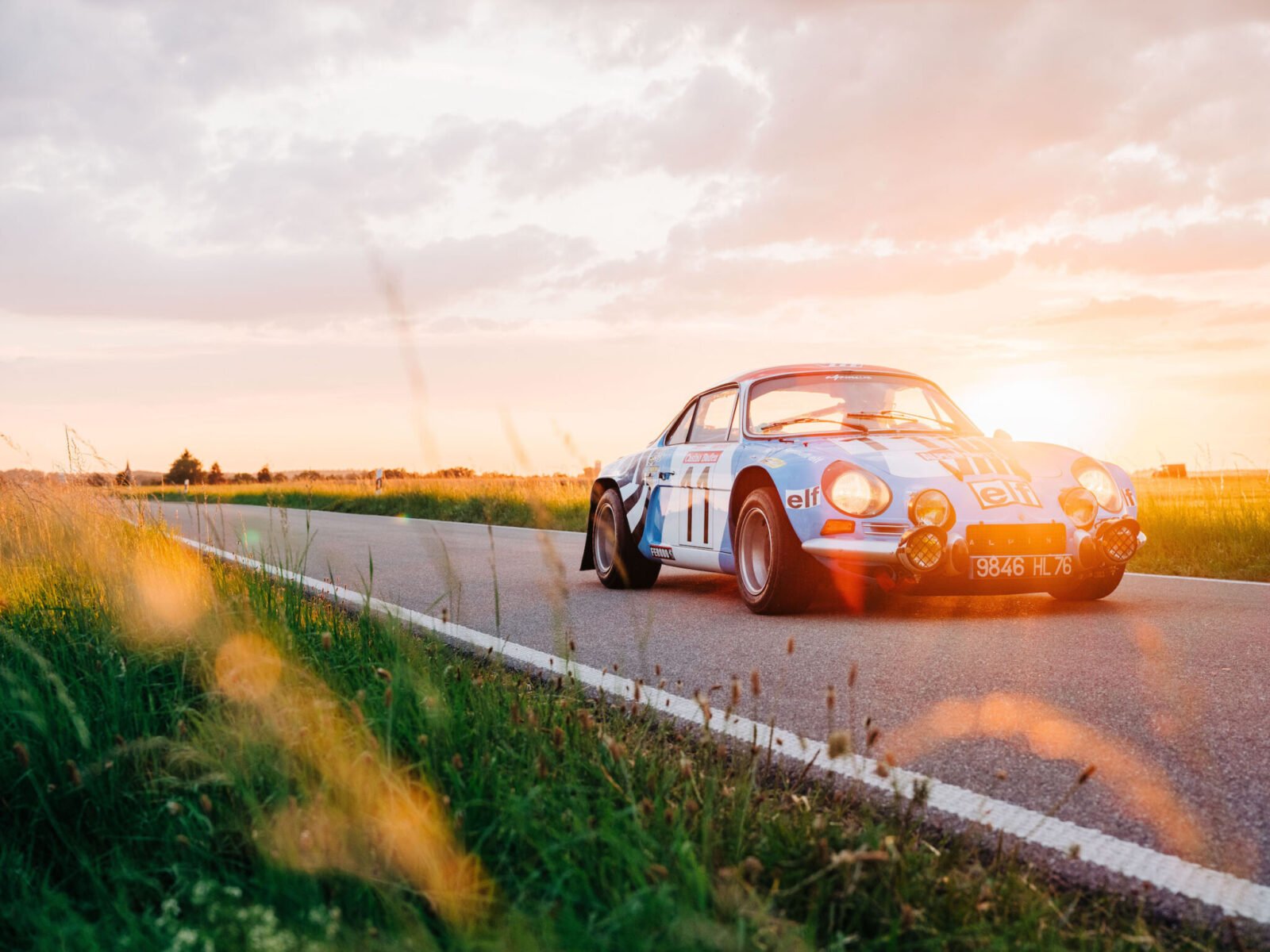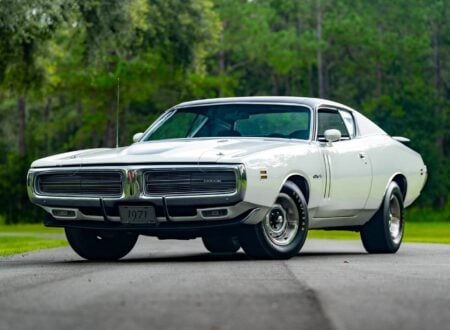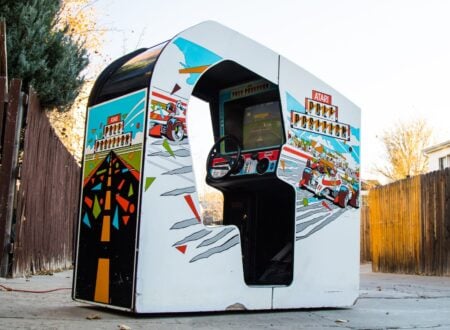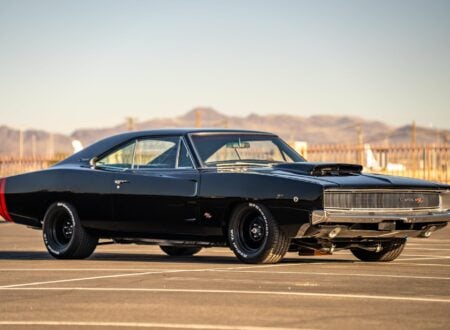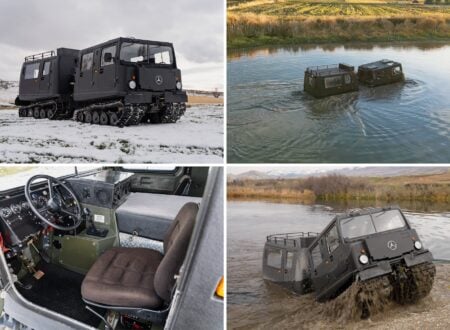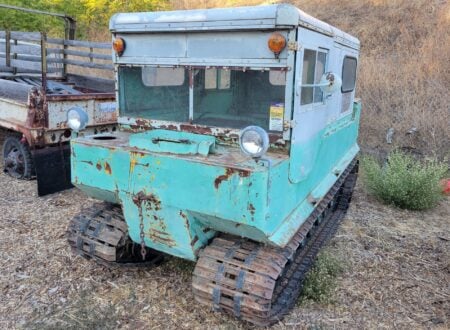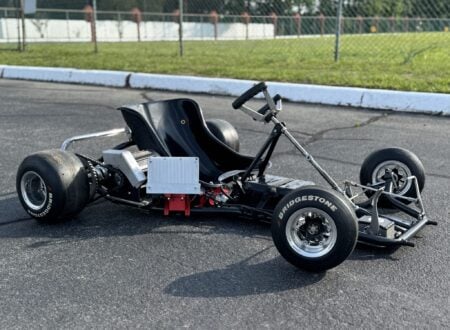The Alpine A110 was the work of Frenchman Jean Rédélé, it leapt into instant stardom in 1973 when it emerged victorious in the first ever World Rally Championship, and the Alpine 110 repeated that victory in 1979.
The car was the result of Rédélé’s creative evolution of it culminating in his version based on the Renault R8 and especially on the Gordini version of that car, founded on a Rédélé designed tubular backbone chassis and clothed with a quite gorgeous fibreglass body by Giovanni Michelotti.
Fast Facts – The Alpine A110
- The Alpine A110 was the first car to win the World Rally Championship during the inaugural season of 1973.
- The high performance Alpine cars were all based on parts from ordinary Renault production cars: the A110 being based on the Renault R8.
- The A110 was made from 1963-1977 and proved to be the penultimate Alpine model.
- The A110 earned so much fame that in 2017 a new Alpine A110 was created to continue both the name and the style of the 1960’s-1970’s original, but in a thoroughly twenty first century modern car.
The Alpine A110 – Background History
The company “Alpine” was created by French motorsport aficionado Jean Rédélé, who might best be described as being a bit of a Gallic Colin Chapman, making Alpine something like a French version of British car maker Lotus.
The story of Alpine began in the years immediately after the end of the Second World War. Jean Rédélé graduated with a degree in engineering from the Hautes Études Commerciales and went to work in his father’s motor mechanical workshop and Renault dealership in Dieppe, a business he would ultimately take over management of.
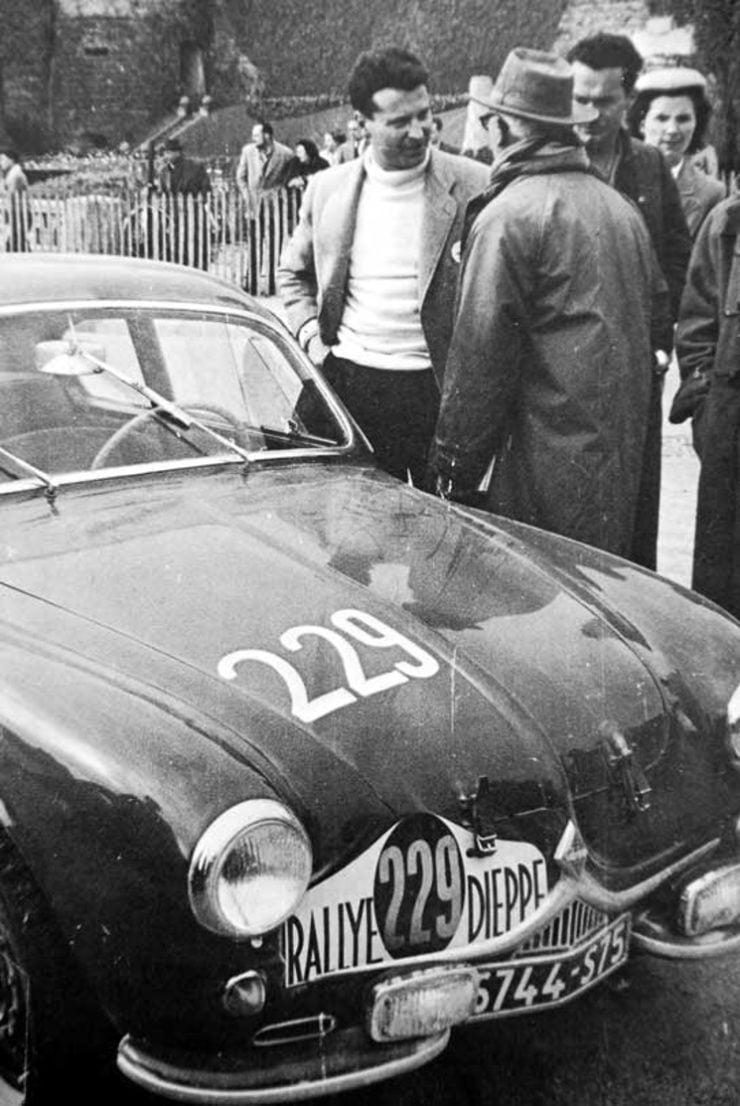

Being a young man with engineering expertise and a motor workshop with dealership to promote Jean Rédélé decided to try his hand in motor sport to promote the dealership and have some serious fun doing it. The new model Renault at that time was the rear engine 4CV which had been surreptitiously designed during the German occupation by a team of Renault engineers under the leadership of Fernand Picard, and that was to be Jean Rédélé’s weapon of choice with which to enter the world of motor sport.
Jean Rédélé made his first sorte into motorsport in 1951 in the Tour de France motor rally, in which he placed 18th overall: then in 1952 he entered the Mille Miglia and obtained a class victory. After that he continued to campaign each year in various events until 1957.
Rédélé achieved a 3rd place in the 1952 Tour de France, 1st in the 1953 GP Rouen (S750), and 4th in the Monsanto (S750), Over 1953 and 1954 he competed in some high profile events including the 24 Hours Le Mans, 12 Hours Reims, 12 Hours Sebring, and Mille Miglia.
After his class victory in the 1952 Mille Miglia Rédélé decided to create his own competition car conversion business which he called Automobiles Alpine. He chose the name Alpine because one of his greatest pleasures was to drive the Alpine mountain roads: lots of hairpins, lots of gear-changing, a driver’s heaven. In 1955 he took the next step and created his own sports car based on the Renault 4CV. This car was the Alpine A106 and to create it Jean Rédélé commissioned Italian designer Giovanni Michelotti to create a sporting coupe body in fibreglass to transform the humble but capable 4CV into an eye-catching sports car.
Not only was the Alpine A106 made to look sporting but it was treated to an increase in engine power, and, for those with sufficiently deep pockets, there was also a custom made five speed gearbox option to make it even more capable winding around alpine roads at competition speeds.
The Alpine A106 was succeeded by the A108 which made its debut at the 1957 Paris Motor Show. This car was based on the successor to the 4CV, the 1956 Renault Dauphine, but was fitted with a steel backbone chassis. On top of that chassis the Alpine A108 was fitted with a quite beautiful fibreglass body by Italian designer Giovanni Michelotti. The power plant of the A108 was the Renault Dauphine Gordini version which had been given performance tuning by “Le Sorcier” Amédée Gordini – nicknamed “the sorcerer” for his uncanny ability to obtain peak performance from competition engines.
The Alpine A110 is Born
The Alpine A110 was an improved car which blended the sound design of the A108 but this time with mechanicals from the newly minted Renault R8. The A110 went into production in 1963 and continued to be produced until 1977. The car was based on the tubular steel backbone chassis designed by Jean Rédélé in collaboration with his cousin Roger Prieur, and featured body designs by Giovanni Michelotti. Being based on Renault R8 components it featured an upper and lower wishbone front suspension and radius arms with swing axles at the rear.
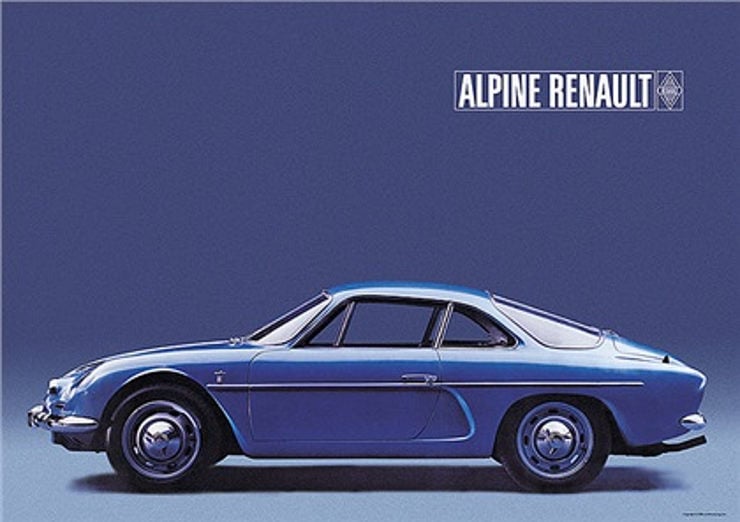

The A110 was first made in the berlinette style (i.e. coupé), 2+2 coupé and then as a cabriolet (i.e. convertible).
The car was installed with a plethora of engines over its fourteen years of production, and because the A110 was built in both ordinary road car form, and in an array of competition versions, description of all the engines is a complex task. We have included a summary of the main production engines below. For specialist competition versions the site “Racing Cars Technology” has detailed summary pages on the Alpine A110 1.6 and Alpine A110 1.8 competition cars
The initial production engine for the A110 was the vanilla Renault R8 inline four cylinder, five main bearing 956cc unit with a cast iron block and aluminium head. the camshaft being chain driven with the cam-chain located at the end of the block. This “Cléon-Fonte” (i.e. Cléon Iron) engine delivered a modest 55hp (SAE) and was installed in production cars from 1963-1965. As you can see from the engine listing below engine power and sophistication improved dramatically over the years of production with the 1970-1975 A110 1600S all aluminium engines delivering 138hp-140hp: these engines being produced in both carburettor and fuel injection versions.
The Alpine A110 made its mark in the world of motor rallying in no uncertain terms. In 1969 Alpine A110’s finished first, second and third in the Coupé des Alpes. In both 1969 and 1970 the car took third place in the Monte Carlo Rally, and achieved the ultimate prize by winning the World Rally Championship in its inaugural year 1973, and then again in 1979.
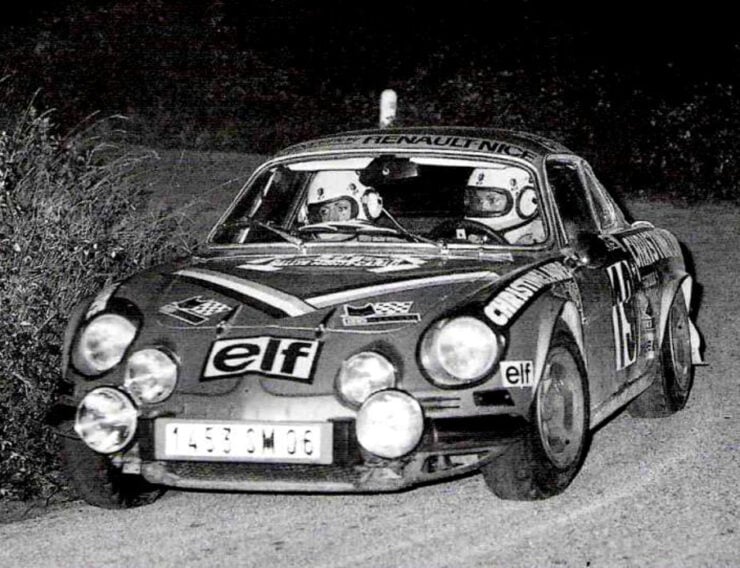

These small and nimble rally cars with their characteristic rear engine “tail out” handling were spectacular to watch and no doubt exciting to drive. The were and still are uniquely pretty cars, very French in style, making the most of their Giovanni Michelotti design.
Specifications
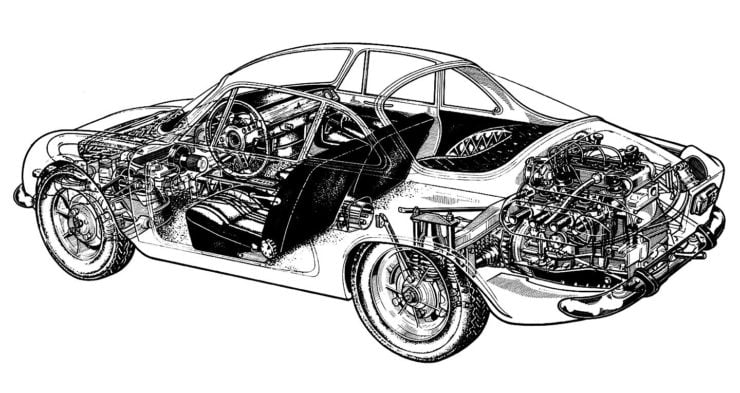

Chassis and Body
Tubular steel backbone Alpine VB chassis with front and rear sub-frames. Fibreglass body.
Dimensions: Length = 3,850mm (151.6″), Width = 1,471mm-1,550mm (57.9″-61.0″), Wheelbase = 2,099mm-2,180mm (82.6″-85.8″), Height = 1,130mm (44 in), Track = 1,250mm (49″) Front, 1,219mm (48.0″) Rear, Weight = 706kg (1,556lb).
Turning Circle = 9,246mm (364.0″)
Suspension, Steering and Brakes
Front: Upper and lower wishbones with coil springs, telescopic shock absorbers, and anti-roll bar.
Rear: Longitudinal radius arms, coil springs, telescopic shock absorbers, anti-roll bar, and swing axles.
Brakes: 261mm solid disc brakes front and rear, with a single piston 38mm caliper for the front and 32mm for the rear. Group 4 specifications cars fitted with 254mm solid discs with a single 48mm piston at the front and 250mm discs with single 45mm piston at the rear. Brake hydraulic system dual circuit with servo assist and featuring an adjustable ratio split between front and rear.
Steering: Rack and pinion, not servo assisted. Standard 3.2 turns lock to lock, Quick rack 2.5 turns lock to lock.
Engines and Production Car Models


1963-1965: A110 956: Renault R8 “Cleon-Fonte” 956cc inline four cylinder with cast iron cylinder block and aluminium cylinder head. Five main bearings and chain driven camshaft producing 55hp SAE.
1964-1969: A110 1100 70: Renault R8 Major “Cleon-Fonte” 1,108cc inline four cylinder with cast iron cylinder block and aluminium cylinder head. Five main bearings and chain driven camshaft producing 66hp SAE.
1965-1968: A110 1100 100: Renault R8 Major “Cleon-Fonte” 1,108cc inline four cylinder with cast iron cylinder block and aluminium cylinder head. Five main bearings and chain driven camshaft producing 95hp SAE.
1966-1971: A110 1300 Super /S: Specially tuned Renault Gordini 1,296cc inline four cylinder with cast iron cylinder block and aluminium cylinder head. Five main bearings and chain driven camshaft. Power output 120hp SAE.
1967-1971: A110 1300 and 1300 G: Standard Renault Gordini 1,296cc inline four cylinder with cast iron cylinder block and aluminium cylinder head. Five main bearings and chain driven camshaft. Power output 105hp SAE.
1967-1968: A110 1500: Renault R16 Cléon-Alu as used in the Lotus Europa. 1,470cc inline four cylinder with aluminium cylinder block and head producing 82hp SAE.
1969-1970: A110 1600: Renault R16 TS Cléon-Alu. 1,565 cc inline four cylinder with aluminium cylinder block and head producing 102hp SAE.
1970-1976: A110 V85 /1300: Renault R12 TS Cléon-Fonte inline 1,289cc four cylinder with iron cylinder block and aluminium head, producing 81hp SAE.
1970-1973: A110 1600S: Tuned Renault R16 TS Cléon-Alu 1,565cc inline four cylinder with aluminium cylinder block and head, producing 138hp SAE.
1973-1975: A110 1600S: Renault R17 TS Cléon-Alu 1,605cc inline four cylinder with aluminium cylinder block and head, producing 140hp SAE.
1973-1975: A110 1600S Si: Renault R17 TS Cléon-Alu 1,605cc inline four cylinder with aluminium cylinder block and head. Compression ratio 9.6:1. Fitted with electronic fuel injection and producing 138hp SAE @ 6,250rpm and torque of 110lb/ft @ 5,450rpm.
1976-1977: A110 1600S SX: Renault R16 TX Cléon-Alu 1,647 cc inline four cylinder with aluminium cylinder block and head producing 92hp SAE.
Transmission
Renault four speed synchromesh manual gearbox standard, or depending on model and options, five speed.


Buying an Alpine A110
Before you make a firm decision to buy an original Alpine A110 its probably best to measure your height and physical build – the A110 is a diminutive car and if you are six feet tall you will only just fit. Getting in and out will require a degree of contortion and, as is usual with small low sports cars the best strategy is to swing a leg in first and then try to gracefully land your body into the seat.
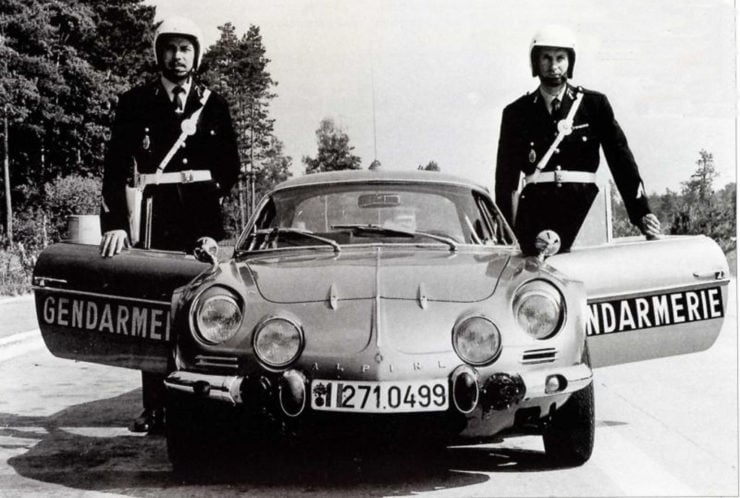

Structurally the A110 is solidly built – the body is of fibreglass so it does not rust, but fibreglass can deteriorate and exhibit cracking. Look for evidence of past damage and assess the quality – or lack thereof – of any repair work.
The backbone chassis is sturdy but made of steel, which can rust depending on the degree of maintenance that has been lavished on the car. Pay special attention to the mounting points of the body to the chassis, and the mountings of the suspension, steering, engine and transmission.
As the car was based around Renault R8 components parts are generally able to be sourced. The Gordini parts tend to be scarce. Specific Alpine components such as original trim should be expected to be more difficult, or may be discovered to be made of “unobtainium”, and will need to be fabricated from scratch.
When you test drive a potential purchase be looking for the usual warning signs one looks for in any used car – especially one as old as being 1960’s or 1970’s vintage. Listen for clunks and knocks in the transmission and suspension, under brisk cornering is there any evidence of body/chassis flex? Does the car pull up straight under hard braking? When you change gear down – especially into second – is there evidence of worn synchromesh? Does it jump out of gear? Test the gear downchange without doing a double de-clutch to evaluate the synchromesh better.
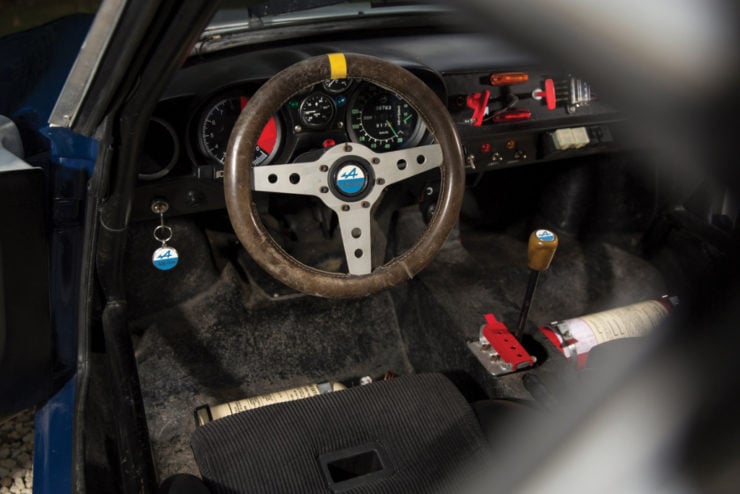

Evaluate the rack and pinion steering (check on its lubrication also) and ensure there is minimal slack and optimum steering sensitivity. Ask yourself how the car feels – is it stable or scary? Does it give you a sense of confidence? Or is there a nagging feeling that all is not well?
With its rear engine the weight distribution of 40/60 front to rear means it is tail heavy, and if original it will have swing axles at the rear requiring that the driver negotiate corners under controlled acceleration. A110’s can exhibit some cross-wind sensitivity depending on the model and the way the suspension has been set up.
Alpine A110’s were and are enthusiast cars and should be expected to have been modified and tweaked during their lifetime, usually but not always for the better.
A properly set up and maintained Alpine A110 delivers a driving experience which tends towards lots of controllable oversteer because of its rear engine configuration. This makes for a thrilling driving experience – it has been said that “Real rally drivers have bug splatters on their side windows – and the A110 is pretty much guaranteed to deliver exactly that when driven enthusiastically on un-surfaced roads.
The New Alpine A110
The original Alpine A110 having gained such a high profile reputation, including being the first to win a World Rally Championship, it was likely that there would emerge a modern version that blended the best of modern automotive engineering with the aesthetic appeal and something of the character of the original. Although some might regard this as being a tad sacriligious, this is an attractive idea.
An original classic performance car delivers the driving experience of the cars of its era, and that driving experience may come as a bit of a shock to younger drivers whose driving has been in cars with Computer Controlled Engine Management Systems, ABS, Stability Control, and the wonderful tyres that all help make modern performance cars so forgiving yet exciting.
So if you are looking for the raw, direct driving experience a classic performance car delivers then a classic should be purchased – but if you want the style of the classic but with a modern driving experience then a modern performance car will suit you better.
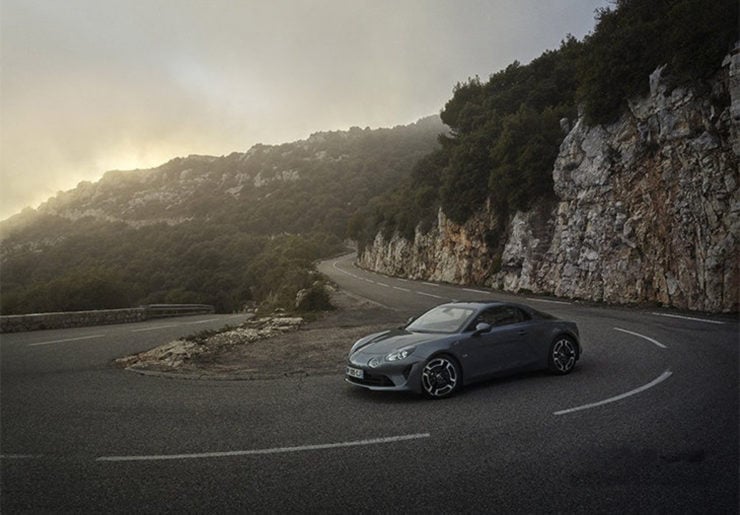

The new Alpine A110 first appeared in 2017, making her debut at the 2017 Geneva Motor Show, and it has been designed to be a thoroughly modern performance car to rival similar offerings from Porsche and Audi, yet with a unique French character, and a startling resemblance to the original A110.
For the new Alpine A110 gone are the tubular backbone chassis and fibreglass body. The new A110 is of aluminium construction and at its heart is a petite 1,797cc inline four cylinder turbocharged OHC engine pumping out a respectable 249hp @ 6,000rpm with torque of 236lb/ft in its basic form, and optionally 288hp @ 6,000rpm with 236lb/ft of torque in the A110 S model. This is the Renault-Nissan “M” engine (Nissan designation “MR”) and it is used in a variety of configurations in such Renault vehicles as the Renault Espace V, and the Renault Megane IV RS280.
The new A110 “Pure” basic model features a Getrag seven speed dual clutch automatic transmission, 17 inch alloy wheels, and delivers a standing to 100 km/hr (62mph) in four and a half seconds. The A110 is made in two more luxurious versions: the Première limited edition launch model of which 1,955 were to be made, and the Legende.
There is also a high performance version the Alpine A110S which has the engine tuned to deliver 288hp with the assistance of a larger turbocharger. The suspension is lowered by 4mm and stiffened while stability is further enhanced with a more heavy duty anti-roll bar. Brakes are carbon ceramic.
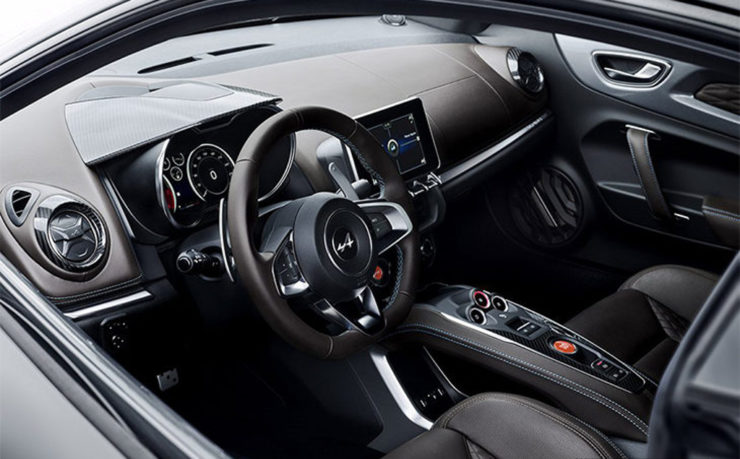

For all these models the top speed of the car is electronically limited to 250km/hr (150mph) which is quick enough for most of us.
For 2022 the A110 “Pure” is just called the A110 and the cars feature an upgraded infotainment system. There is an A110 GT which has engine power of 296bhp, 18 inch alloy wheels, sports exhaust, and an upgraded optional equipment list.
Whether the original classic or the new A110 are for you will be your decision. Both are delightful automobiles, but each delivers a completely different experience despite the similarity in their looks.
Above Video: This short film shows the A110 in its dominant 1973 World Rally Championship, then it shows the same car in the modern day returning to the scene of its wins.
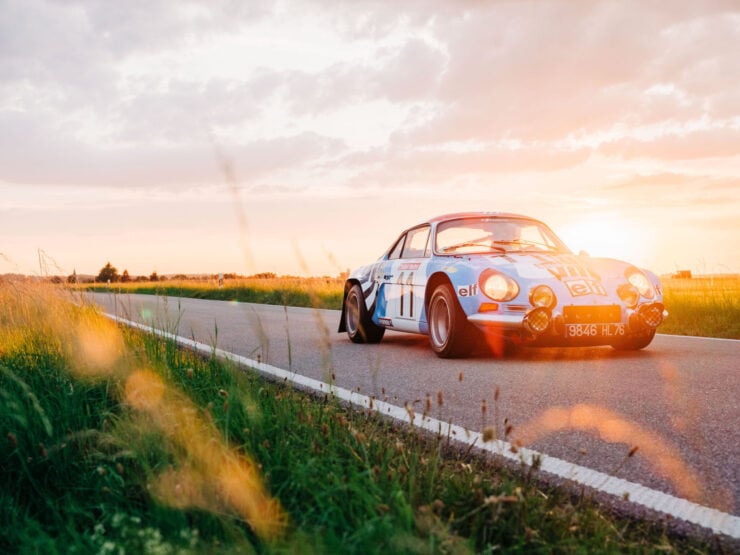
The above image is the work of Marc Holstein and Christine Gabler, read the full story behind this remarkable Alpine here.
Picture Credits: Alpine, Renault, RM Sotheby’s, Marc Holstein, and Christine Gabler.

